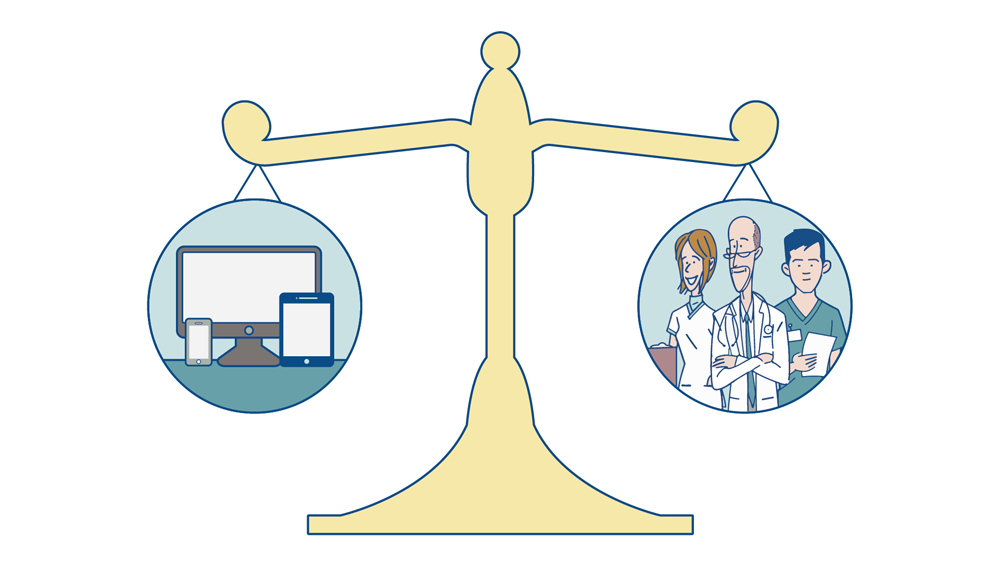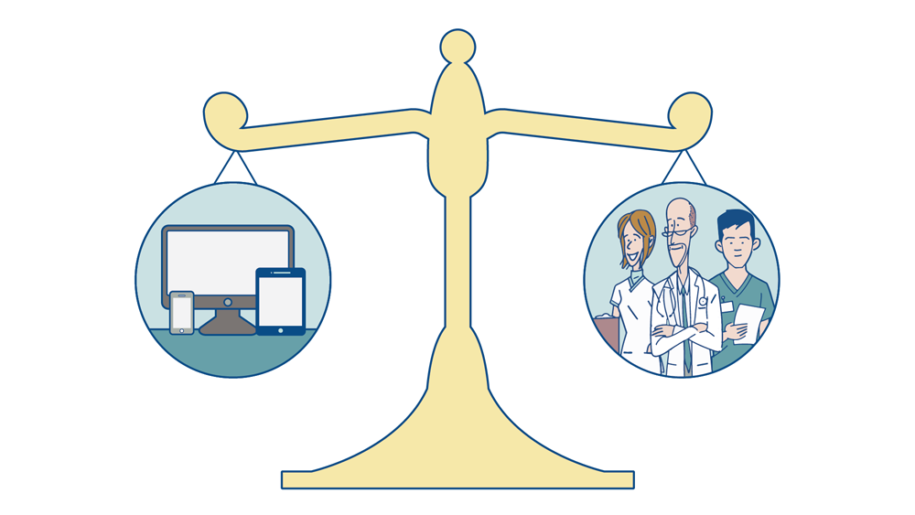
Cracking the Care Management Code: The Right Combination of People and Technology
As the cost of funding the U.S. healthcare system strains both individuals and the country’s resources, payment and delivery models need to change. Over the last 10 years, we’ve been driving toward new approaches. To date, most efforts have been focused on insurance and payment reform—key pillars of the required reformation. Lagging far behind, in our view, has been the transformation of our delivery system.
We have to fundamentally alter the medical model—a model that today is purpose built for acute and ambulatory sick care. This standard approach relies on providers opening their doors and waiting for (sick) patients to come to them.
But even among the sickest of patients who do find their way to care, providers get only brief glimpses into a patient’s world. Patients spend most of their time outside the reach of the facility-based healthcare system (i.e., at home, at work and everywhere in between). To treat the whole person, to truly impact care, it’s not good enough to see patients periodically or worse when there’s an acute need. We have to connect with patients between traditional office visits and facility-based interactions. We need more touches, not fewer.
What is the prescription? In an ideal world, it may look like this:
- Proactively engage patients more often outside regular office visits
- Activate patients in their own preventative care before they’re already too sick
- Provide nurse care management for the many, not just for the few
- Profitably provide care in these new settings
- Digest acquisitions of physician practices and other facilities by more closely integrating care among acute, ambulatory and post-acute settings
If we’re honest, the reality of today’s healthcare system is far from this ideal. Average 30-day readmission rates in 2017 were 15.3% hospital-wide and 22.1% for heart failure patients. The U.S. spent over $1 trillion in 2016 on chronic care, or nearly 6% of GDP.
And health systems have largely failed to engage with patients outside of the traditional delivery system. For example, CMS’s Chronic Care Management (CCM) program, which reimburses providers for caring for patients remotely, has touched fewer than 2% of Medicare beneficiaries. This is true despite the best efforts of mHealth start-ups, EHRs, and healthcare IT vendors, which have raised hundreds of millions of dollars but produced a litany of failures. Among such failures is CareSync, a Florida-based CCM vendor, which folded just three years after relaunching its own patient engagement software and building a call center with over 300 staff.
So why aren’t we further along?
We haven’t made greater progress because delivering care in new models, with new payments, with sick and complicated patients, is hard to operationalize and to finance. Essentially, it turns the traditional care model of treating sick people in facilities on its head. It requires provider organizations to connect with patients in their homes rather than in their facilities. Connecting on “patient time” is far more challenging than collecting patients in a waiting room.
More than technology alone, the most successful approach requires new operational expertise (financing, infrastructure, staffing, scale) and a nursing team on-task to build ongoing relationships with patients in their homes. Many providers haven’t figured out how to offer robust capabilities on the modest care coordination reimbursements available.
“The Signallamp Health team has supported our efforts for physician and patient engagement. Signallamp is flexible and works with its clients to design a workflow that works for patients and providers. We started with a proof of concept at a few practice locations and have since expanded to all of our primary care clinics. Through our collaborative efforts with Signallamp Health, we are able to ensure that all TPI patients have access to chronic care management services.”
- Alyssa Nardi Mullen, MHA, Director of Quality and Compliance, Temple Physicians Inc.

